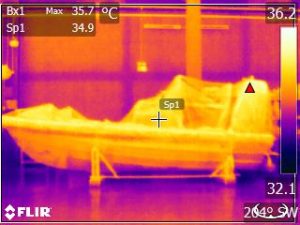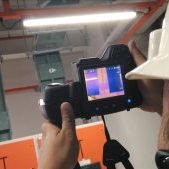Introduction to Infrared Thermal Imaging
What that allows us to see things around us are visible light rays reflected from the objects to our eyes. Our retinas are light sensitive and are effective only for the visible range of the light spectrum. Other than the 7 colours that are present in white light, there are invisible light waves that we may be unaware of. Ultraviolet light is one invisible light which we only notice its effect when our skin gets tanned after long exposure to the sun. Infrared is another invisible light which is the culprit for the greenhouse effect when your car is parked under the hot sun with windows wound up. Our subject of interest is Infrared.
Understanding the characteristics of infrared rays can allow us to open a whole new world of possibilities to gather useful information for analysis. Infrared cameras are developed for us to clearly see what our naked eyes could not possibly see. Infrared Thermography technology is increasing gaining popularity in inspection of equipment, animals and even humans. The technology allows a safe and non-intrusive way to conduct tests. Infrared cameras have been deployed at custom checkpoints around the world to detect presence of any feverish travelers amongst crowd arriving from epidemic prone countries.
Infrared Thermography in Electrical Engineering
As electrical power systems require stringent compliances, Infrared Thermography has been widely adopted as an economical method to conduct annual pre-emptive inspections for power license renewals. The technology does not require any outages of power supply during inspection which may be very costly to business and time-consuming. It provides a non-contact inspection on live systems which assures absolutely safety to the user.
Certified Thermographers are able to analyse and determine any electrical anomalies from infrared thermal images taken on electrical equipment. Thermographers are able advise the professional engineer the root of the problem before recommending the next course of action to take for rectifcation.

Thermal image of a circuit breaker

Visible image of the same circuit breaker
Other Areas of Application for Infrared Thermography
Infrared thermography imaging may be extended to other industries to detect problems. As the technology involves thermal (heat) transfer, water or liquid seepages may be detected using infrared cameras. Precise locations of water seepages in vessels or water tanks can be detected easily. Thus rectifying the problems becomes much easier with faster turnaround time.

Thermal image of a vessel on a dry dock

Water seepage detected on the side of vessel
The Future of Infrared Thermography
Scientists have been able to exploit the physics of Infrared rays to bring about useful information to us. The advancement of Thermal Imaging cameras and software have enabled users to conveniently capture thermal images with fast turnaround time. The cost-effectiveness and convenience of using this technology will no doubt continue to win favour with people and the trend will continue to grow in the next few years.

